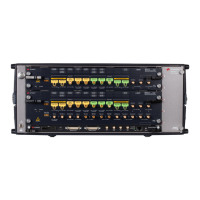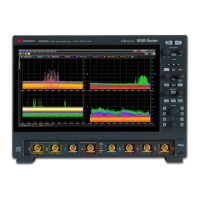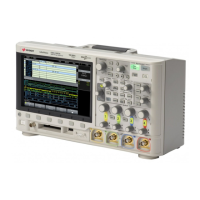120 Keysight InfiniiVision 3000T X-Series Oscilloscopes User's Guide
5 Math Waveforms
If acquisition averaging is also used, the analog input channel data is averaged
and the math function averages it again. You can use both types of averaging to
get a certain number of averages on all waveforms and an increased number of
averages on a particular waveform.
As with acquisition averaging, averages are calculated using a "decaying average"
approximation, where:
next_average = current_average + (new_data - current_average)/N
Where N starts at 1 for the first acquisition and increments for each following
acquisition until it reaches the selected number of averages, where it holds.
Press the Reset Count softkey to clear the number of waveforms evaluated.
See Also • “Averaging Acquisition Mode" on page 225
Smoothing
The resulting math waveform is the selected source with a normalized rectangular
(boxcar) FIR filter applied.
The boxcar filter is a moving average of adjacent waveform points, where the
number of adjacent points is specified by the Smoothing Points softkey. You can
choose an odd number of points, from 3 up to half of the measurement record or
precision analysis record.
The smoothing operator limits the bandwidth of the source waveform. The
smoothing operator can be used, for example, to smooth measurement trend
waveforms.
Envelope
The resulting math waveform shows the amplitude envelope for an amplitude
modulated (AM) input signal.
This function uses a Hilbert transform to get the real (in-phase, I) and imaginary
(quadrature, Q) parts of the input signal and then performs a square root of the
sum of the real and imaginary parts to get the demodulated amplitude envelope
waveform.
